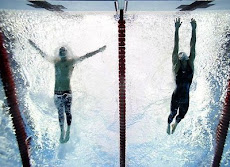Many cyclists overlook the importance of interval training because they think that in order to ride and perform better they just need to ride for longer durations. In a recent study that I've read by (Kirsten A. Burgomaster et al.) they suggest that by only doing short sprint intervals for two weeks you will be able to see greater physiological changes that will improve your performance. In this study there was a greater increase in the oxidative enzyme called citrate synthase which is a good indicator of aerobic performance. The main adaptations that occur during aerobic training are the development of the mitochondria which help deliver energy to the working muscles and an increase in the number of capillaries within the exercising muscles. A trend with endurance training over a number of months has shown an increase in VO2max to a certain degree until it eventually plateaus, whereas the oxidative enzymes within the mitochondria continue to rise. The changes to the mitochondria that are brought on by training result in something called glycogen sparing, which is the sparing of glycogen as an energy source and instead breaking down fats at higher intensities. This would obviously result in the muscles being able to produce energy at a higher intensity while being able to minimize the amount of by products such as lactate that hinder the muscles from functioning properly at that given intensity.
So now that you know that pure endurance training has its limitations in terms of VO2max. We can see that there is a place for interval training, and that it plays an important role in increasing the mitochondria's functional capacity. Interval training also helps the muscles to function at a higher intensity without completely depleting the muscle glycogen stores. There is a place for long endurance training, because you have to ensure that your VO2max has reached its ceiling level, but you won't see the same results if you just do endurance training without doing short intense intervals. During the off season or base as it's termed in cycling, the cyclist can implement short intervals into their training program. They just have to perform very short intervals once or twice a week for a few weeks.
If you're stuck in the same place in terms of training and improving, and you feel that you aren't going anywhere, give interval training a bash and see the results for yourself. Sometimes it's good to break routine and do something that might stress the muscles in a different way. Don't take my word for it, get on the bike and do it yourself.
Trevor




















Thanks for the blog. Whatis the best type of interval training that I should do? High intensity intervals? What intensity? Thanks for all the information so far.
ReplyDeleteHi ExerciseDoc
ReplyDeleteThanks for the comment. They say with interval training that you should be working at is between 85 to 90% of your max heart rate. So if you have a heart rate monitor try set it so you can stay in those zones when you are doing the intervals. If you don't have a heart rate monitor then just ride until you are hurting, and you will know when you are going about 90%.
You must remeber you get different types of interval training. You don't only have to do it on flat terain but you can also do intervals during hill climbing, but this will be a lot harder. Generally the intervals should be short but very intense bouts of exercise that will push you to your limit. I suggest to start off try find a flat open section of road and maybe do an interval for about a minute or so and then after the interval take a recovery period. During this recovery perod you can either stop riding or what I suggest is that you just roll around slowly to aid in the recovery process. Generally during interval and speed training you work with a work to rest ratio of 1:3. Meaning that if you do an interval for 1 minute you must rest for 3 minutes. This will allow your anerobic pathways to recover and be able to perform for the next interval. Do three of these sessions with three recovery sessions between.
If you have any questions or if I have not covered any areas that you wish me to comment on then please write to me again.
Thanks a Million
Trevor
is interval training of any benefit for a football(soccer) player, if so, can you please provide some info on designing a programme for interval training that would be of benefit before the football season kicks off.
ReplyDeletethanks
chris
A football player would benefit from interval training because it would increase the player's speed and it would help in terms of using their glcogen stores more effeciently.
ReplyDeleteInterval training is basically short periods where the athlete will train at their Vo2 max or just below. These exercises generally last from as little as 40 sec to a few minutes depending on the intensity you are training at. With interval training the work yo rest ratio is about 1:1 meaning for every minute you work for you need to take the same time to recovery.
In terms of implementing this into you soccer training I would suggest that you perform repetitive sprints or shuttle sprints, like the 250m shuttles. These drills will increase your speed and will help you to maintain your speed for longer.
I hope this has answered your question
Trevor